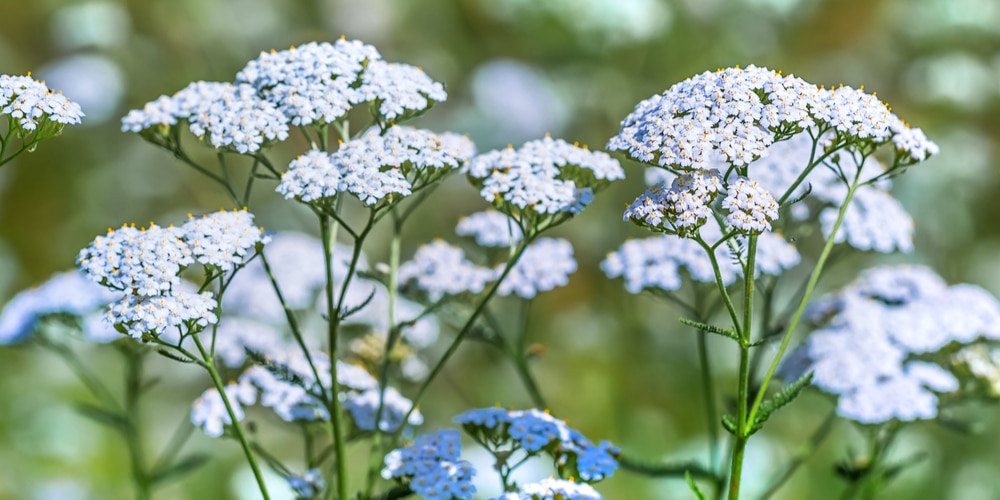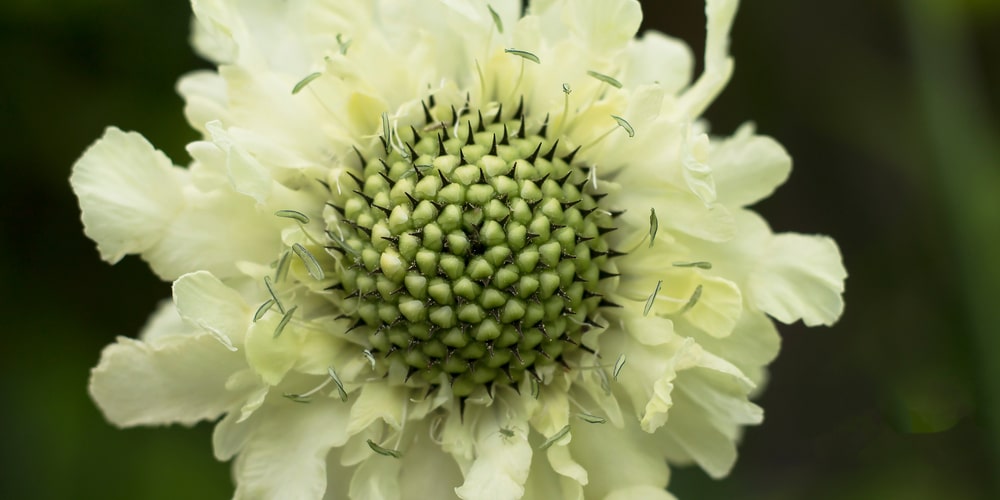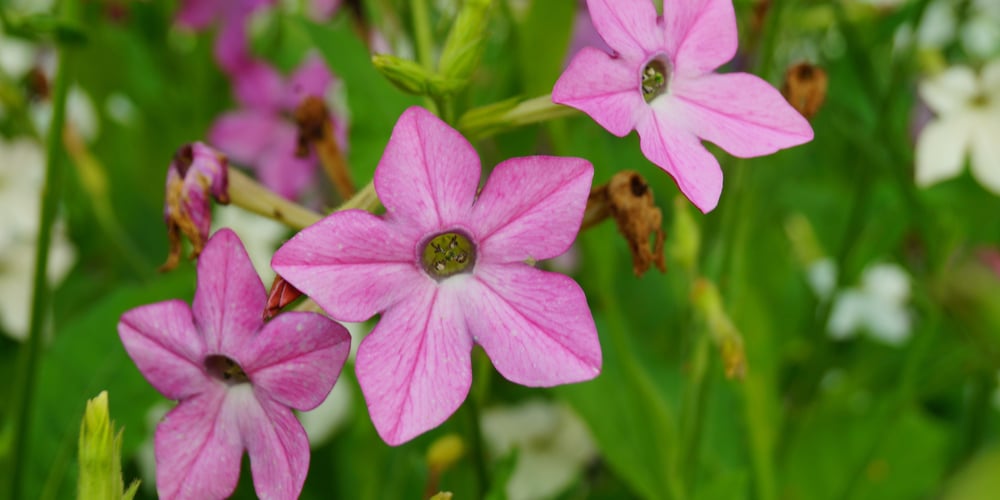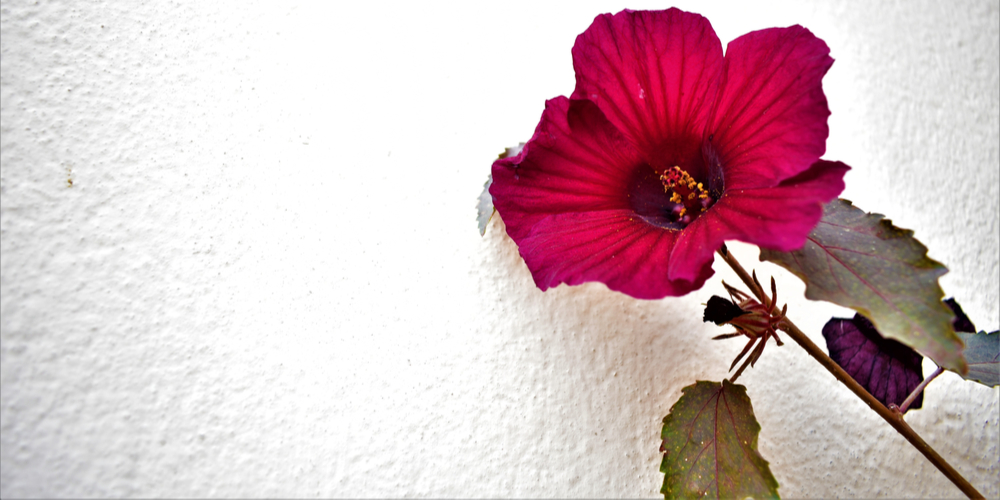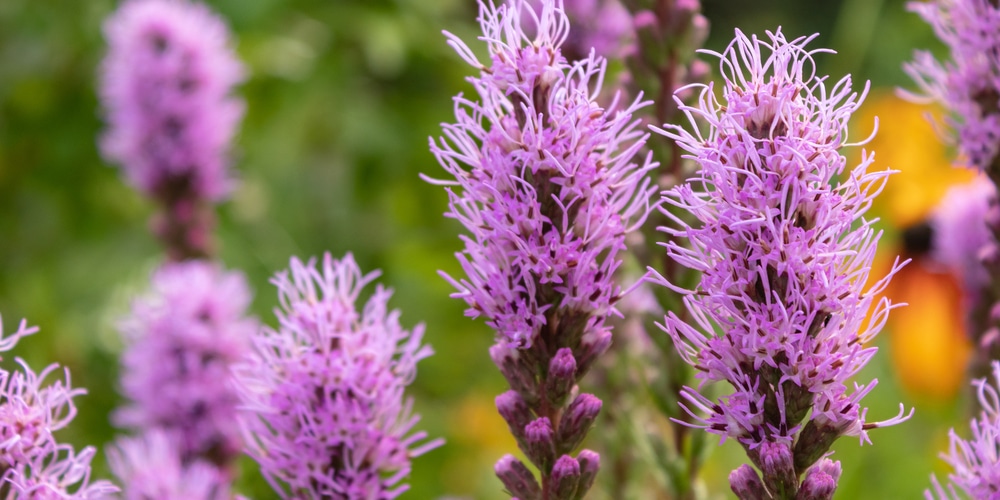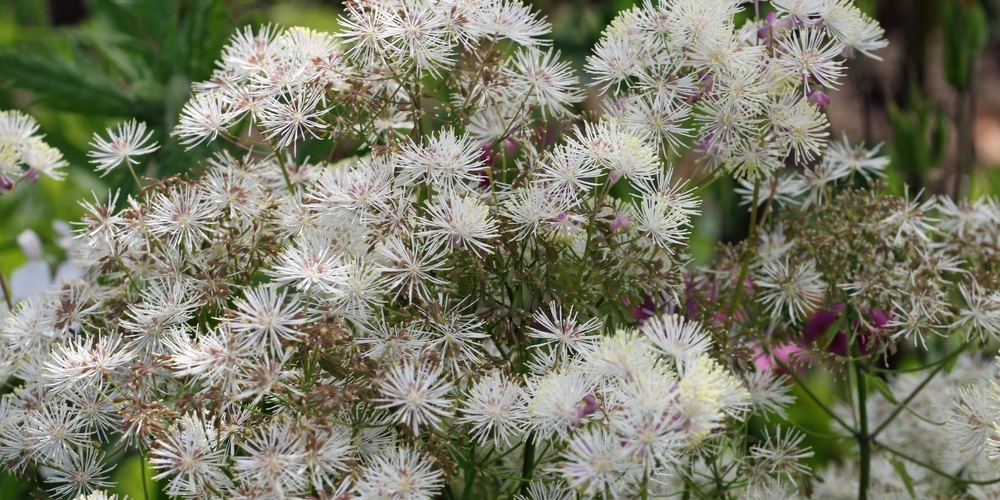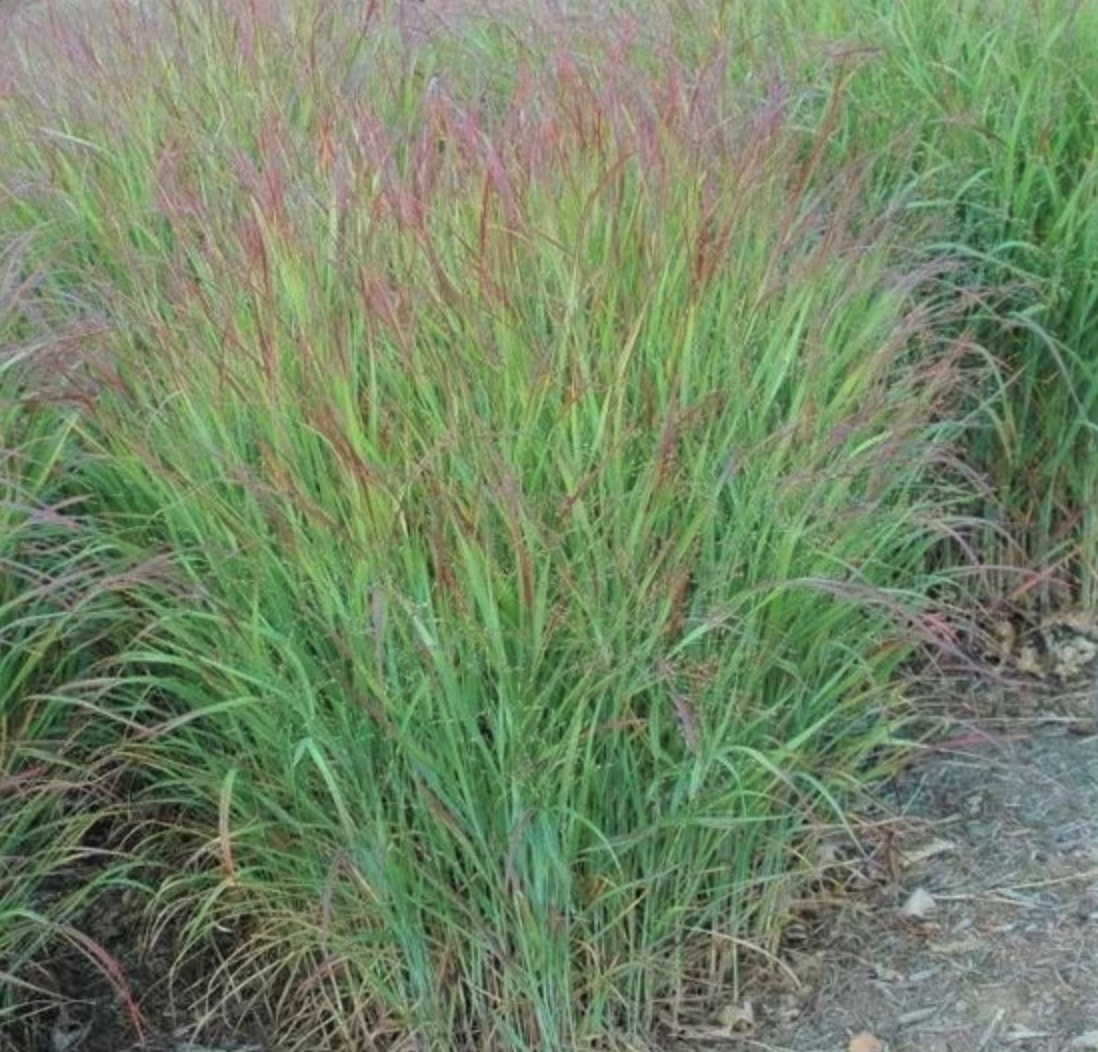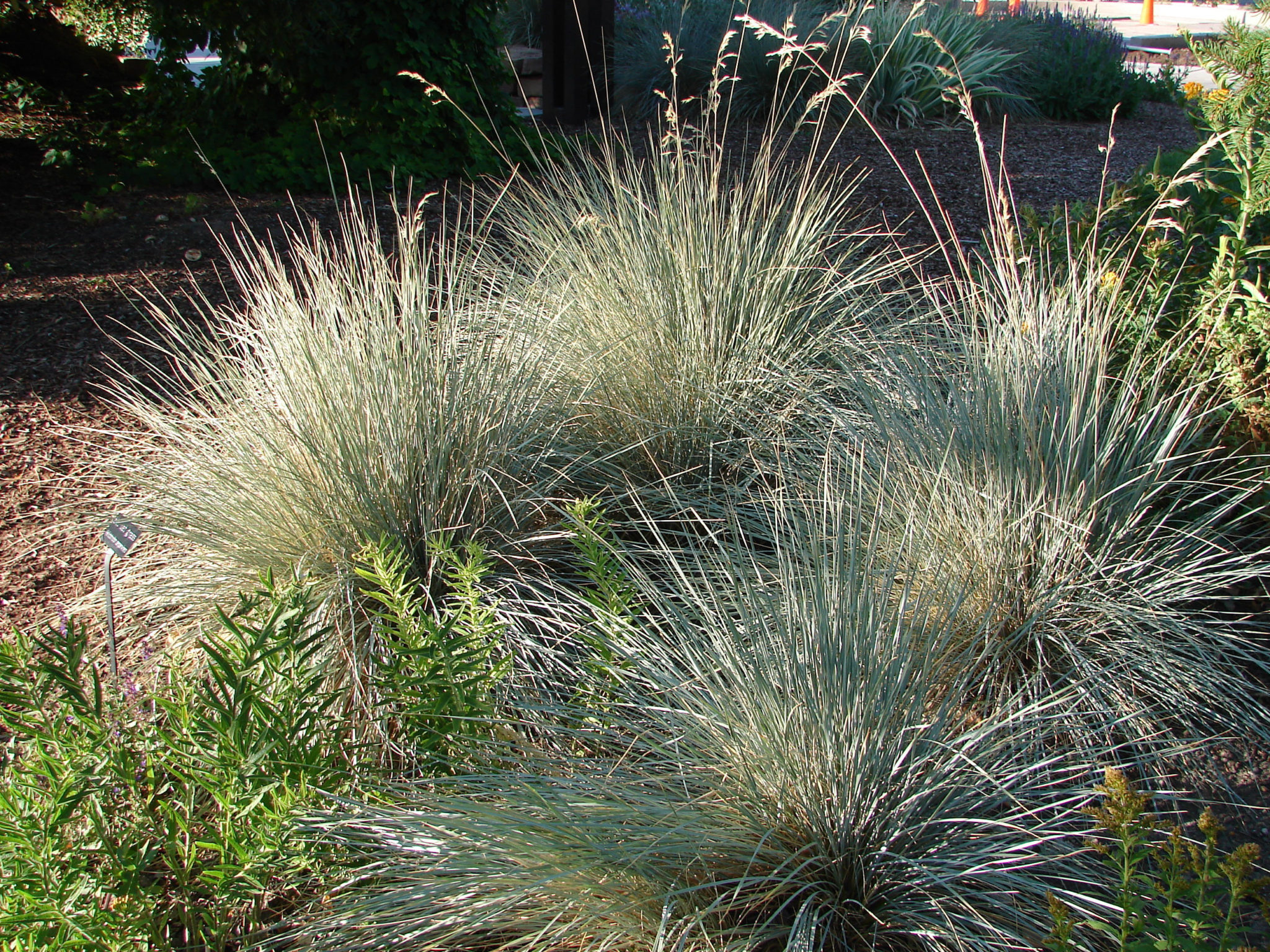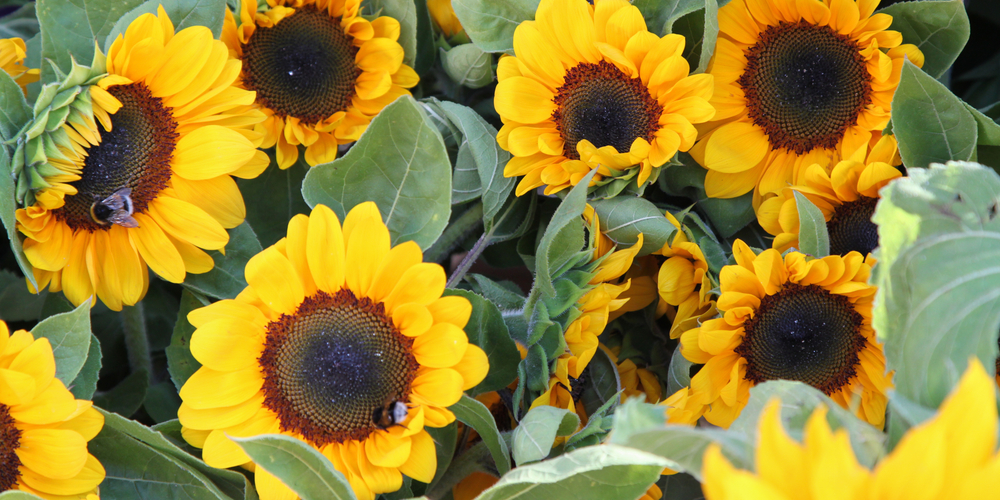Planting tall flowering plants may start as a decorative whim. Perhaps, you have a little space on the side of your driveway that looks too boring. Or you have more land that needs landscaping. In any case, your creative gardening journey has just begun.
Most perennial plants that produce tall flowers live for at least two years. So, they are the ideal choice to beautify your border or backyard. Here are ten tall flowers that will make your garden the prettiest of all!
10 Attractive Tall Flowering Plants Everyone Should Know
1 – Achillea
You can find many Achillea species, one of which is part of traditional medicine. For reference, Achillea millefolium has proven antispasmodic effects.
This tall flowering plant produces thousands of little, tiny flowers, which are super-rich in nectar. Pollinators like bees and butterflies love it.
You can grow Achillea in all USDA zones 3-9 and plant different varieties to get different colors, both dark and bright.
2 – Cephalaria Alpina
The yellow scabious, and its variety, Cephalaria gigantea, attracts bees and makes lovely soft creamy yellow flowers full of nectar. In detail, the flowers sit on top of big wiry stems that stand up really tall. Instead, the foliage is down low.
This tall flowering plant prefers well-drained, rich soil and full sun. Also, it does not mind windy areas. This perennial thrives in zones 4-7.
3 – Flowering Tobacco
As one of the cutest members of the family Solanaceae, the Nicotiana sylvestris is one of the most enthralling tall flowering plants.
This impressive annual plant has elegant green leaves and tubular flowers. On top of that, the blooms release a sweet evening scent.
Like all good things, it is short-lived. Plus, it only grows in USDA zones 10 and 11. But if you can grow it, it is an absolute winner.
4 – Hardy Hibiscus
Some Hardy Hibiscus species can grow up to 8 feet tall. Above all, these enduring tall flowering plants are long-lived and can easily last for more than a decade.
The Hardy Hibiscus grows to a pretty substantial size. And its colorful flowers reflect that. For clarity, it blooms like crazy as well. Usually, it blooms in mid-August in USDA zones 5-9.
During the first years, it may take a while to get going. But when it starts flowering, the plant gets nice and big with dense shrubs.
5 – Liatris Spicata
This perennial wildflower is native to North America. In brief, it loves the full sun and will grow between 3-4 feet tall. It is drought-resistant and does well in moist soil.
Why would anyone add the Liatris spicata to their tall flowering plants? Because as its common name, dense blazing star, suggests, it makes showy purple-spiked blooms.
Even a single specimen brings in a lot of wildlife like hummingbirds and is extremely eye-catching. The only downside is that the seeds need a cold-moist stratification period or to be winter sown. But other than that, this plant grows pretty much everywhere (USDA zones 3-8).
6 – Meadow Rue
Thalictrum delavayi makes hundreds of lavender mauve flowers. But if you search enough, you can find a species that make white flowers, making the flowering fronds look like one puffy cloud.
Unlike most tall flowering plants, the meadow rue makes bubbles of buds that wait to burst open. In the end, they all bloom at the same time, and together with its delicate foliage, the end result is a pretty, elegant ornamental plant.
This plant adapts to all USDA zones between zones 3 and 7 and grows between 4 and 6 feet tall.
7 – Rudbeckia
Rudbeckia is one of the easiest tall flowering plants to grow. Some people call it Black-Eyed Susan or Brown-eyed Susan even though they all refer to different varieties—and while we are at it, the Rudbeckia Goldsturm is, most likely, the more popular variety.
This tall flowering plant can handle any weather condition, even poor soil. Plus, it is drought tolerant and cold-hardy. Most varieties survive in USDA plant hardiness zones 4-9.
Rudbeckia grows better under full sun, but it can handle part shade. All in all, it is an invasive plant that needs your help to deadhead it to stop propagating. Its flowers are perky and golden.
8 – Shenandoah Switch Grass
The Shenandoah switch grass is low-maintenance and produces burgundy flowers. Above all, it works great as a large bed filler or backdrop plant you can place between properties.
Prized for foliage like most tall flowering plants, this ornamental plant grows in dry to wet, well-drained soil. Of course, it performs better in damp soil than in dry hot. But it will survive. (USDA zones 5-9)
The Shenandoah switch grass usually reaches 4-5 feet and is the ideal filler in front of even taller structures or trees.
9 – Stipa Gigantea
Also known as Golden Oat Grass, this ornamental perennial grass propagates by seed in spring. Or by division in late winter.
After blooming for a long time and releasing pollen and seeds, the stem and flowers turn golden. What remains is only a bunch of empty casts. But this is when it surges among the most refined tall flowering plants. Why? Because it retains an architectural quality.
You can cut the dying stems. But the foliage at the bottom will stay evergreen. In early spring, you can cut even that foliage. The plant will regrow lush flowers once more.
Stipa gigantea grows better in USDA zones 5-10.
10 – Sunflower
Here is a tough-as-nails, almost bulletproof member of the family Asteraceae. Helianthus comes in 150 varieties and can grow up to 6ft tall, which means it is one of the tallest flowering plants.
You may want to plan where to put sunflowers because these tall flowering plants can shade out shorter plants. On a side note, you might want to cultivate many sunflowers for their valuable seeds. We can divide its species into two big groups depending on the fruit they produce:
- striped sunflower seeds (The ones you find in edible sunflower seed packets at the supermarket)
- black sunflower seeds (Mostly used for making sunflower oil)
Helianthus plants compact the soil. So, they are also a fantastic choice for crop rotation. Besides, they do not mind moist soil but hate having wet feet. Their hypnotizing yellow blooms are best suitable for USDA zones 6-9.
